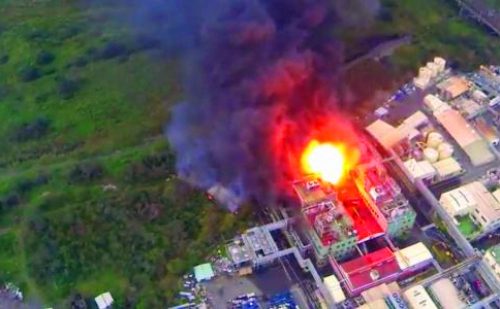Introduction: n-butanol is a flammable liquid and is a dangerous product. It is colorless and has a pungent alcohol odor. It is hygroscopic and can be mixed with water, alcohols, ethers, ketones and benzenes. It is generally used as a raw material for plasticizers, and is also a raw material for organic synthesis such as butyraldehyde, butyric acid, butylamine, and also an oil extraction agent.

N-butanol has the danger of fire and explosion when it is exposed to heat or fire. Its vapor can form an explosive mixture with air. Explosive limit of 1.4% to 11.2%, a flash point of 29 °C. The auto-ignition point is 343°C. After being heated, it will decompose and release toxic fumes. In addition, it reacts strongly with oxidants. In a fire, there is a danger of a hot container bursting and it is poisonous.
Butanol is also an anaesthetic and has stimulatory effects on the eyes, nose, and pharyngeal mucosa. Repeated contact with the skin can lead to dry skin, scaling, chapped skin, and sometimes dermatitis and eczema.
Because n-butanol is toxic, you should pay special attention in the event of a fire. In the event of fire, we can use fire-resistant foam, dry powder, 1211, carbon dioxide, and fog water to extinguish fire, and use water to cool containers in the fire, dilute the escaped liquid, make it a non-combustible mixture, and protect firefighters. During the first aid of the personnel, the person who inhales the steam should quickly leave the site, place a rest and keep warm. If the eye is stimulated, it needs to be flushed with water for more than 15 minutes. For serious patients with n-butanol splashing in the eye, go to hospital for treatment. When our skin is exposed to n-butanol, it should be rinsed with water and washed thoroughly with soap. When you mistakenly take n-butanol, rinse your mouth, drink water, and treat with **.
Butanol also has a lot of attention in storage and transportation. (1) Packing mark: Flammable liquid. (2) Packing method: (III), the outside of the glass bottle is lined with soft materials or iron drums (can not use aluminum barrels). (3) Storage and transportation conditions: Pay attention to loading and unloading lightly to prevent damage to the container; Do not expose to sunlight; Store in a cool, ventilated warehouse; Keep away from fire and heat sources; Store and transport away from oxidants. (4) Leakage treatment: First, cut off all sources of fire, wear gas masks and gloves, rinse with plenty of water, and ventilate the exhaust fans on the contaminated ground.
The above is the dangerous characteristics of n-butanol and the first-aid method. The relevant practitioners must understand the squat!
Belt Conveyor Sensors,Automatic Control Sensor,Belt Conveyor Safety Protection,Coal Mine Belt Conveyor Sensor
Jiaozuo Huafei Electronic & Electric Co., Ltd. , https://www.intelligentmine.com